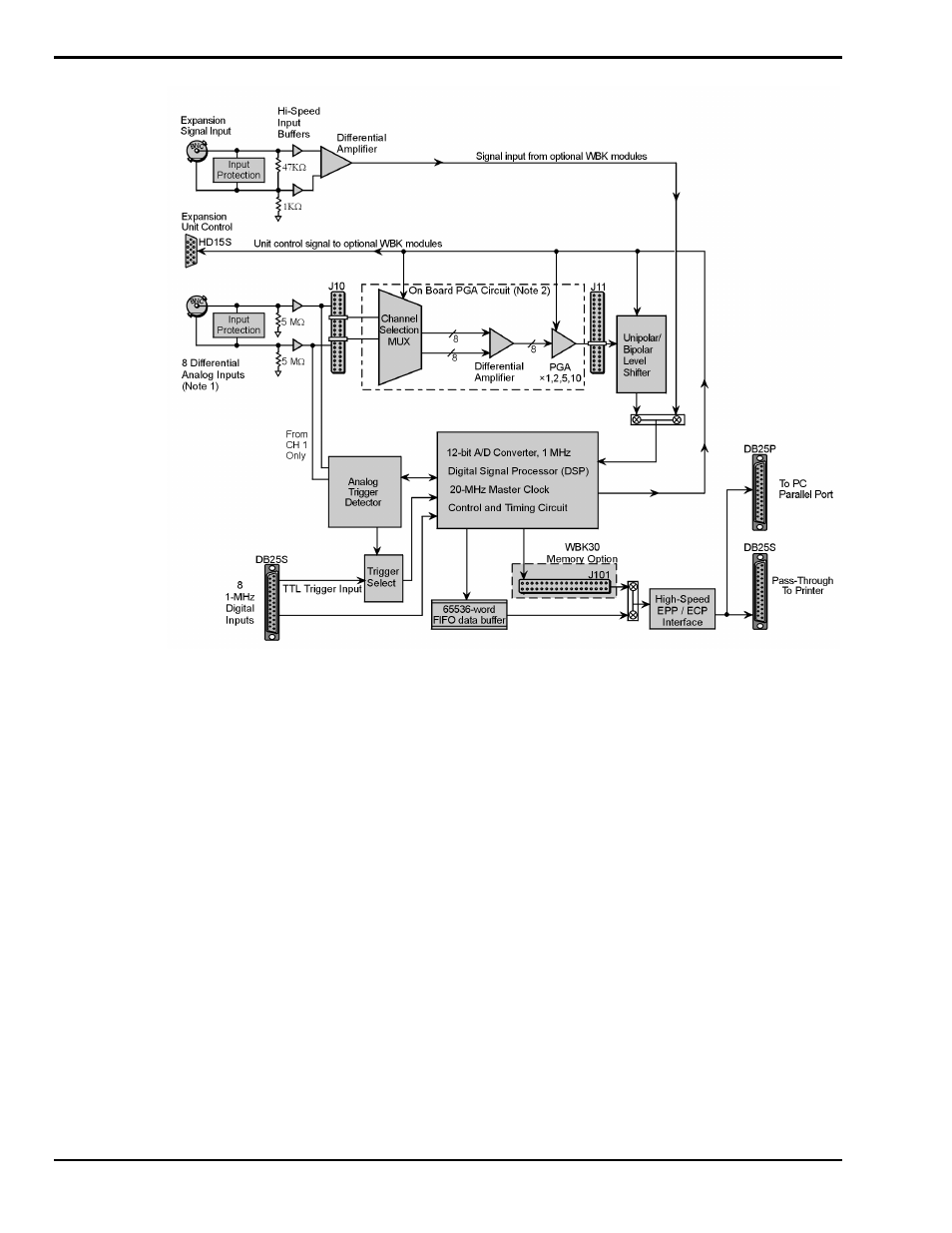Wavebook/512 and wavebook/512h, basic operation – Measurement Computing WaveBook rev.4.0 User Manual
Page 48

4-2 WaveBook Operation Reference
06-08-01
WaveBook User’s Manual
WaveBook/512 and WaveBook/512H, Basic Operation
Block Diagram for WaveBook/512 and WaveBook/512H
Note 1:
Each channel has input protection and connects to J10 via its own BNC connector. Channel 1 is the only channel that
connects to the Analog Trigger Detector.
Note 2:
An optional WBK11, WBK12, or WBK13 series board can be used in place of the on-board PGA circuit. Prior to
installing an option board, jumpers on J10 and J11 must be removed to disengage the PGA circuitry.
In regard to WaveBook/512 and WaveBook/512H, each of the 8 pairs of differential signals (one per BNC
connector) is buffered and then switched by the channel-selection multiplexer. The selected differential
pair is then converted to a single-ended signal by the programmable gain amplifier (PGA) and level-shifted
to locate the desired range (within the A/D converter's fixed input range). Two offset settings are available,
unipolar and bipolar. Unipolar offset is used for sampling signals that are always positive. Bipolar offset
is used for signals that may be positive or negative. For example, when set for unipolar at a gain of ×5, the
input span is 2 volts and the amplified signal is offset so that input voltages from 0 to +2 volts can be
digitized. When set for bipolar operation, the offset is adjusted so that input voltages from -1.0 to +1.0 volts
can be digitized. The signal is then switched over to the A/D converter and digitized to 12 bits in 1 µs.
Note that the A/D converter's input can be switched to the expansion signal input, allowing the device to
read one of 64 possible expansion channels (supplied by up to eight WBK10 expansion chassis). A digital
signal processor (DSP) processes the digitized value and corrects the value for gain and offset errors. The
DSP places the corrected result into the FIFO data buffer that holds the samples until the PC reads the data.
If the sample is used for triggering, the DSP determines if a valid trigger event has occurred.
WaveBook includes low-latency analog or TTL-level triggering. The analog trigger detector examines
channel 1 to determine if a trigger has occurred. The selected low-latency trigger is presented to the control-
and-timing circuit that starts the acquisition after the trigger. The TTL trigger is taken directly from the
digital I/O port.
